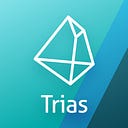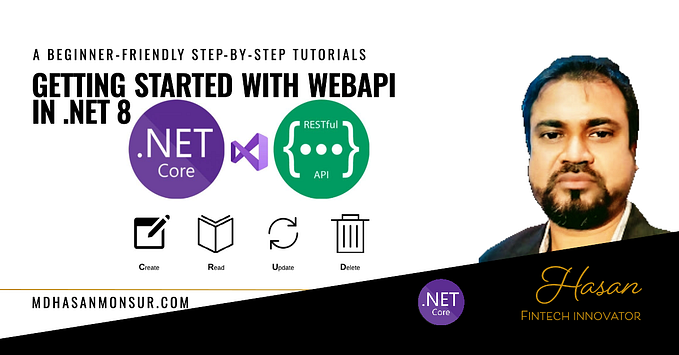
It has been a while since our last AMA with our CEO. We have noticed that our community has many questions and concerns about our projects. After collecting these questions, we sorted them into 11, covering almost all big concerns. In response to these concerns, we have invited Dr. Ruan to provide specific answers.
1. When is Trias mainnet expected to be public? (Question comes from ID 3)
The core tech of Trias is its Layer ‘-1’ technology, the Leviatom network, which makes Trias very different from other chains. The Layer ‘-1’ is the underlying trustworthy communication network. It allows all the “above” chains, say Layer 1 or Layer 2, to work at a much faster speed with less and cheaper nodes while achieving higher security and trustworthy guarantees.
This capability is amazing. In mid 2019, we made a live demonstration in Singapore to show how a Leviatom-enhanced Ethereum significantly outperforms an Ethereum built from the official GitHub, with both being deployed in the same experiment hardware settings. This was the prototype of our mainnet v1.
On Dec 25th 2019, we worked with Tsinghua University and released a product based on this tech, we called it the Trustworthy Foundation Chain (TFC). Hence starting in 2020, we began to provide different TFC-based “Layer 1” chains, such as Ethereum, Hyperledger and Cosmos, to empower a variety of usage scenarios, including digital finance, manufacturing, agriculture, medical system and human resource and education system.
These applications, apparently, are provided in a consortium chain setting, as the v1 infrastructure was not matured enough to power these sophisticated applications in a much wider network space. However, we have gathered invaluable experience in enhancing the v1, as well as the code-base for all those different blockchain-based enterprise applications. Later 2020, we upgraded our mainnet to v2, with further improved performance, scalability and reliability.
At the end of last year, we finished the development of our mainnet v3. It is the first version to support large-scale Layer ‘-1’ consensus nodes deployed in the WAN setting. We further built a Leviatom-enhanced Binance Smart Chain (BSC), and we gained very good results compared with the officially built BSC. This is why starting from the second-half year last year when we introduced Triathon, there were always workloads running comparing the TBSC (for Trusted-enhance BSC) and FBSC (Fundamental BSC, i.e. the original version).
In fact, the Triathon project itself is built entirely based on our mainnet v3. It is the first node composing the fully-functioning Trias mainnet. As I introduced in my last AMA, the node in Trias network is very different. Because it is a Layer ‘-1’, its nodes are actually the Layer 1 and hence Layer 2 networks it supports. So in its initial setting, we currently only have one single node built the Triathon. And we are building the other six, i.e. the other six eco-projects of our core ecosystems.
The next two eco-project prototypes we are going to release are Ethanim and Tusima. At present, we have built Ethanim’s validation mining client based on Layer ‘-1’. And for Tusima, the privacy financial infrastructure will adopt Layer ‘-1’ to support its privacy-computing engine to implement algorithms such as ZKproof, TEE-based privacy computing, and federated-computing. By the end of this year, the currently three eco-projects will come in place in a playable status, and, hopefully if everything is in place in schedule, a mainnet v4 will also be presented.
Regarding the explorer and wallets. Firstly we have already built an explorer and privacy-preserving wallet for our mainnet v1. We made a live demonstration as early as Q2 2019, in Seoul if I remember correctly. They are still up and running. But, as I said, they are built for Layer ‘-1’, currently mainly serving developing and testing purpose for our eco-chains.
Meanwhile, each eco-chain will have its own explorer and wallets etc. They will utilize the capabilities provided by our Layer ‘-1’’s explorer or wallets and will be released according to their project‘s own schedule.
2. Considering the current market situation, how will Trias sustain itself to go through the economic downturn? (Question comes from ID 10, 15 and 24)
Currently, the market situation is not favorable. Many projects are facing financial hardship. While Trias has a different situation. Since we have an established business in China, we can keep a proper revenue stream by offering our customers innovative technology solutions and products. In short, our projects are not funded by tokens, so our core technologies have never been hindered by the market situation. This helped us to really focus on delivering better technology and products for customers.
3. Are there any updates about TRIAS listed on another exchange? (Question comes from ID 4 and 45)
Regarding exchange listing, some people worry about the special conditions from China, which is true. There’re more limitations to projects with Chinese backgrounds regarding exchange listing. That is also why we’ve spent a long time to further design and develop our eco-projects, including Triathon, Ethanim and Tusima. We’ve started seeking C-suite executives overseas for these three key projects. For example, Ethanim formed a top-management team in Japan. And we plan to expand our team in Britain for the next step. In doing so, we can better prepare our eco-projects (Triathon, Ethanim and Tusima at present) for exchanges.
Meanwhile, TRIAS token is still the primary fuel for all eco-projects initial launching. TRIAS holders will enjoy benefits when any of the eco-projects list on exchanges. We’ve promised to do so and we will definitely keep our promise.
4. As the governance token, what kind of role does TRIAS play in the ecosystem? How does it link to each project token? Both Triathon and Ethanim have NFT, what are their roles? (Question comes from ID 13, 16, 22, 23, 30 and 36)
Getting native tokens by staking TRIAS will be the common economic mechanism for all eco-projects, including Triathon, Ethanim, Tusima and a new and upcoming project. Staking TRIAS to a specific eco-project guarantees security and efficiency using Layer ‘-1’ technology. Besides, staking TRIAS can get users the project token.
I also want to say something about NFT. Triathon and Ethanim have their own NFTs, which are crucial to driving their business. They are different from the present hype NFT projects. For example, each Triathon NFT actually represents a “low-code” programming model in the web 3.0 era. (Interested readers may google “low-code” to see how it will impact the web 2.0’s project development and customization model.)
By combining different NFTs, users are actually programming testing cases. In doing so, everyone, whether they have a technology background, can come to drive IT infrastructure and take a step further to trust machines. This is why we want to build the platform. Users can release their programming models on Triathon and when they test projects, they will make earnings. It ultimately makes Triathon’s P2E a counter-inflationary model. So that it can keep growing and producing true value to the whole crypto ecosystem.
5. Since Trias Japan has been founded, are there any updates about it? It’s said that Trias is considering moving to Japan to avoid Chinese regulations. Is it true? (Question comes from ID 7, 8 and 40)
It is different when it comes to the Japanese market. Our team there took a lot of communication in the first stage. The good news is we’ve signed NDA with the companies we mentioned (but not allowed to mention again before reaching certain milestones). They’re critical businesses in the prominent Japanese consortiums. And we have started cooperation in supply chain finance, security token offering(STO) projects and stablecoin for Japanese Yen.
Trias Japan has been founded already and the team has been continuously promoting the commercialization of Trias technology. They had offline meetups, but activities are not so often hosted now due to the pandemic. But online promotions are as usual. While the legal entity of Trias foundation itself won’t move to Japan, I believe, in the web3 era, decentralized organization is the most suitable way of company development.
Apart from Trias Japan, we plan to set up Trias UK by the end of this year. In fact, we’ve already set up a company in the UK for our fourth eco-project, with many core members on board already. It will be officially announced later this year.
Next, resources in Japan, Britain, China and Singapore will be well connected and used to create a better environment for Trias and deal with compliance issues.
6. How does Trias interact with its eco-projects and how about the mutual interactions between eco-projects? (Question comes from ID 11, 19, 21, 31 and 32)
Instead of setting step-by-step goals for eco-projects, the Trias Foundation won’t intervene in the development and operation of each eco-project. We mainly focuse on each project’s milestones. When projects can make decisions more freely, they will go faster, either on development, community building and further, having themselves list on exchanges.
Meanwhile, each eco-project keeps a close relationship with technology. They all adopt Layer ‘-1’ technology and mint their native tokens by allowing users to stake TRIAS. This is the underlying mechanism — relatively independent in operation while closely connected in technology.
7. Question regarding the current situation in Triathon (Question comes from ID 43)
Significant progress has been made behind the scenes. The Triathon developer team has never stopped, even though there had been obstacles. What I want to share with you is we have begun cooperating with several top security auditing institutions for a while and they have adopted Triathon’s underlying technology. The cooperation will be announced soon.
We never forget our ultimate goal — building a decentralized testing and auditing platform. During the development process, we pay a lot of attention to the utility of software products and their structures. For the past six months, we mainly worked on how to meet the demands of those institutions as well as individual developers and ethical hackers. Next, more APIs to drive more testing methods will be released, as well as more NFTs. By combining NFTs, ordinary users can experience the same testing and auditing service as institutions and developers.
After six-month cooperation, we reaffirm that Triathon will meet the industry’s immediate needs and greatly promote the token auditing and release during the Web 2-Web 3 transition time.
8. What does Triathon plan to do for the next stage? (Question comes from ID 17 and 44)
In Q3, Triathon’s primary goal is to serve security auditor firms, who will pay for the service in the form of GEON’s purchases or through other digital currencies with GEON burning. Triathon’s constant stream of revenue will continue to empower GEON to exhibit its true value.
As more organizations begin to use Triathon’s underlying platform, we will continue to earn revenue, from which we will distribute a portion back to contributing users.
We will mint various detection tools into NFT, enabling ordinary users to program for auditing organizations in a low-code way. I believe it is the first time ever to embed program logic inside an NFT, and allow user to code by simply combining or minting or upgrading NFTs. I believe it is the future of programming in the web 3.0 era.
In this way, users who lack knowledge of blockchain technology can also experience code auditing through NFT-driven low-code programming. In addition, investors can be attracted to participate as auditors to test their interested projects. Users from any project can use Triathon to test whether the project they want to invest in has security risks, such as the risk of LUNA. This way, more users can purchase Triathon’s early warning alert service. Triathon will use security simulation to determine the most appropriate time to release alerts, helping users to prepare in advance and avoid losses.
In addition, we will also open the platform to individual developers hopefully by the end of this year so that they can simulate the test environment on our platform by writing test cases and test scripts and creating more NFTs through Triathon’s programming interface. Of course, they can sell NFTs (code) to provide more test tools for the platform to realize value gains.
Triathon will continue to develop its P2E model to attract as many users as possible. Moreover, as Ethanim and Triathon share the same underlying Layer ‘-1’ technology. They enjoy high interoperability, so metaverse games on Ethanim can also connect with Triathon to enrich its P2E model.
9. Is there any plan for listing GEON on exchange? (Question comes from ID 5).
We’re working on updating the econ paper of Triathon, including GEON’s utility and value. Moreover, critical function updates will be released in the year’s second half. Listing GEON on exchanges by the end of the year is also part of the plan.
10. When will the first ITO be held? It’s said the first ITO would be Ethanim. Is it true? (Question comes from ID 33 and 42)
Tusima will be the first ITO project on Triathon.
Tusima aims at delivering a full-stack privacy-aware decentralized financial infrastructure on Layer 2, designing and building together by its community, including scientists and researchers, research institutions, developers, investors, and many more enthusiasts.
To better gather all these decentrally-disturbed wisdoms, Tusima will adopt the community-driven product delivering approach, the MVD (Minimum Viable DAO). It’s different design and development stages will be launched on Triathon, step by step with its ITO proceedings. To unlock each batch of Tusima’s ITO tokens, each phased objective will be implemented, tested and reviewed on Triathon. Once approved, tokens can be unlocked.
Through Tusima’s ITO, we will demonstrate for the first time, how the testing/auditing-and-launching/issuing a token in crypto-space works. I believe this decentralized testing/auditing-driven token launching method is the future of delivering crypto projects.
Through Tusima’s ITO, we are also experimenting a whole new way for building a full-stack privacy-aware public chain. I don’t know for sure right now, but possibly it will be a much faster and reliable way to deliver the crucial infrastructure of this kind to the crypto space. Let’s see.
11. How to check more progress about TRIAS? (Question comes from ID 1, 2, 6, 9,18, 27, 28 and 34)
Trias is a Layer ‘-1’ blockchain and decentralized cloud computing infrastructure. Scientific research and technology development need enormous investments in time and resources. Currently, the core team syncs the (rough) progress of Trias to our community in its weekly reports.
Apart from communicating to our communities, we’ve gathered a lot of supporters at universities, including Oxford University, Peking University and Tsinghua University. We have set up joint labs with them separately, and work very closely with their top scientists on daily basis. For the past six months, most of my time has been invested in frequent communications and discussions with our top scientists. We have made multiple theoretical breakthroughs and are working on several research papers. I believe significant innovations always come from underlying technological breakthroughs.
Meanwhile, I’ve certainly observed that James and Cesar have done much in the community. Voices are saying that we should hire them. First of all, I’d say I feel grateful to the community for the support of Trias. The sustainable development of a project is inseparable from the community’s strong support. I have conversations with Cesar on LinkedIn. I’ve learned a lot from him. But instead of hiring them, I hope they can keep as neutral as possible and gain good rewards from our community campaign activities. This helps keep everything open. It is the spirit of our crypto space.
Every member of the community is our partner. I encourage more enthusiasts to join us as KOLs and we certainly have incentive plans for each of you. I believe as long as we’re aligned on the same goal, our project community will bond as a big family.
Note: Attached are 13 community questions with upvotes over 100. They were covered in the relevant questions above:

Official website: https://www.trias.one
Whitepaper: https://www.trias.one/whitepaper
Telegram: https://t.me/triaslab
Twitter: https://twitter.com/triaslab
Discord: https://discord.gg/uSHpezwKWZ
Notion: https://www.notion.so/Trias-62b0088a57a74c62b22099206464426d
Trade on Pancake: https://triaslab.medium.com/how-to-buy-trias-on-pancakeswap-d9bd1628e69f










